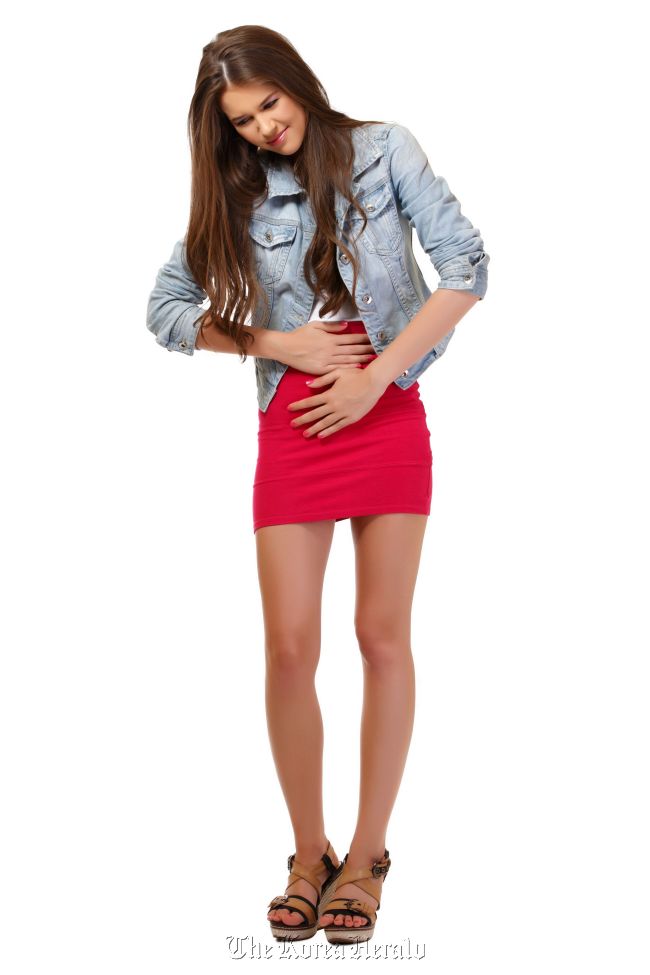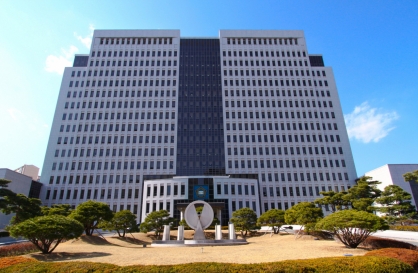Kim Min-sun, a 28-year-old office worker, takes a day off every month for one physical reason that she wouldn’t speak aloud ― premenstrual syndrome.
“I feel ashamed of asking for physical leave. But I think it is better to take a day off rather than suffering from cramps and back pain all day long at the office,” she said.
Like Kim, the number of young women claiming their right to deal with premenstrual syndrome is on rise.
The number of patients with PMS-related problems surged nearly 50 percent to 127,000 in 2011 from 86,000 in 2006, according to a report by the National Health Insurance Corporation. The greatest number of patients, 42.1 percent, were young women in their 20s, followed by those in their 30s and teenagers with 23.6 percent and 18.8 percent, respectively.
“I feel ashamed of asking for physical leave. But I think it is better to take a day off rather than suffering from cramps and back pain all day long at the office,” she said.
Like Kim, the number of young women claiming their right to deal with premenstrual syndrome is on rise.
The number of patients with PMS-related problems surged nearly 50 percent to 127,000 in 2011 from 86,000 in 2006, according to a report by the National Health Insurance Corporation. The greatest number of patients, 42.1 percent, were young women in their 20s, followed by those in their 30s and teenagers with 23.6 percent and 18.8 percent, respectively.

Changing social perceptions of young women visiting gynecologists has attributed to the rise of PMS patients in their 20s, officials said.
Korean women, particularly those who are unmarried, were reluctant to see gynecologists because of the common association of young women visiting gynecology clinics with sexual diseases or pre-marital pregnancy.
“Unlike in the past, prejudice against single women visiting gynecologists which stopped them from having proper treatment, has disappeared. (Campaigns that promoted) the importance of early medical checkups on women’s diseases have also been attributed to the growth of PMS patients,” said professor Jung Jae-eun at Ilsan Hospital.
Premenstrual syndrome or PMS in short, refers to physical and psychological symptoms suffered by some women a few days before or during menstruation. The term was coined by a British doctor in the 1950s. Symptoms include swollen or tender breasts, upset stomach, bloating, headache, backache, joint or muscle pain and mood swings. Appetite changes and food cravings are also common PMS symptoms.
Doctors say changes in hormones during the menstrual cycle or the formation of chemical substances when the body starts to shed the lining of the uterus causes PMS.
Statistics showed that the majority of PMS patients were in their 20s. However, patients in their 30s, 40s and 50s suffering from PMS are likely to have other serious diseases such as adenomyoma or uterine polyps, she said. Adenomyoma refers to an abnormal growth in the muscle tissue of the uterus.
“If women in their 40s shed more blood and have a longer menstrual period, they must think of the possibility of having other diseases such as uterine polyps,” Jung said.
More than a half of young Korean women in their 20s are known to have uterine polyps.
Endometriosis is also a common health disorder that causes pain during menstruation. It occurs when cells from the lining of the uterus grow in other areas of the body. Young patients with endometriosis need to have immediate treatment or surgery because it could cause problems with fertility, Jung said.
To ease the symptoms of PMS, Jung recommends keeping one’s stomach warm and sleeping on one’s side.
“Washing the lower body is another method to reduce the pain as well as exercising on a regular basis and eating healthy food,” she said.
Others say that painkillers help to ease physical symptoms, such as cramps, headaches and backaches. Over-the-counter drugs that contain ibuprofen, ketoprofen or aspirin would help.
By Cho Chung-un (christory@heraldcorp.com)
-
Articles by Korea Herald






![[News Analysis] Yoon's first 2 years marked by intense confrontations, lack of leadership](http://res.heraldm.com/phpwas/restmb_idxmake.php?idx=644&simg=/content/image/2024/05/09/20240509050612_0.jpg&u=20240509233252)
![[Graphic News] Beer the most favored alcoholic drink by Koreans](http://res.heraldm.com/phpwas/restmb_idxmake.php?idx=644&simg=/content/image/2024/05/09/20240509050765_0.gif&u=)











